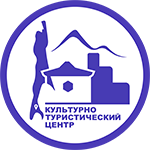When in 1907 the capital of Karafuto Prefecture was moved to Toyohara (Yuzhno-Sakhalinsk) from Odomari (Korsakov) Japaneses included City Park construction in general architecture development plan. In Japanese period there was a forest tree nursery (now hotel “Santa” is situated there) which supplied the whole city with planting stock.
In Soviet period in 1946 G.I. Erzhenin became the first director of the Park. Also such members of the staff as instructor for the mass trainings, accountant-cashier, two controllers and three guards were included in a staff list. I wonder that during the first working season of the Park different events with Japanese citizens living in the city took place. The most popular events were different competitions in wrestling and baseball matches.
When in 1948 the requiring payment was brought to entrance the staff list was completed with the positions of entrance cashiers and more controllers. In 1948 16900 people visited the Park, in 1949 they were 17700 people. At the same time the experiment with the required payment for entrance was admitted as inefficient. Visitors could go into the Park for free as there were not even a fence protecting its territory.

Morning. Lake Verkhnee.
In the early 50-s flower planting agriculture appeared in the Park. Greenrooms and hothouses were constructed. Planetarium started working in late 40-s.
There were hairdresser saloon, photo studio, pictures of the park were distributed and postcards with the Park views were sold. The printed editions of some of these postcards run up to 5 thousand copies.
At the hill near a big swimming pool there was a belvedere – music pavilion where the orchestra played.
In summer there was an open-air cinema where performances and cinema shows constantly took place. The USSR national artists’ Rimma Zelenaya and Marina Ladynina performances became an outstanding event in summer cinema life.
In All-Russian competition in 1968 the Park was awarded with the title “The Best Park of the Republic” and diploma of the first grade. In1967 the Park was also awarded with the honored title “Excellent Recreation-and-Entertainment Park”.
The Sakhalin Regional Executive Committee’s decision on Aprill 22, 1968 was to assign a title of Y.A. Gagarin.
The most spectacular shows in the Park from 1969 to 1974 on the reconstructed stadium “Cosmos” (former cycle track) were matches with the masters of “Sakhalin” football team in USSR Championship between teams of “Category A” and “Category B” (analogue of 2nd league nowadays). The USSR veterans team’s arrival was the most memorable event, among them there were champions of the Olympic Games and the Euro Cup.
After the threat of the financial scandal with the team “Sakhalin” the decision of the regional governing body was to call the team of masters back from the competitions and to disband it. Some players left the borders of Sakhalin Region others entered the staff of the other islands football teams.
In 60-s flower exhibitions were organized, later they became traditional ones. People changed the collection seeds and shared their experiences there. Sakhalin flower festival also took place there. In 60-s there was a botanical excursion post. Students from other districts of the region came on excursions. A rare botanical garden has such a huge amount of sort of plants.

You can still find Japanese corners in the Park
From the second part of 70-s became not the best time for the Park and the situation hasn’t changed by nowadays. The staff of the park worked for keeping it in order but the financing of the park was poor. Some forcible decisions became a reason of degradation of the Park. This way they made a skating rink on the whole field of stadium “Cosmos”, and this led to its destruction. Elastic and bituminous tracks started destroying. Fountain “A Boy with a Sturgeon” which stood at the south entrance to the Park just disappeared. Into rare berry yew-trees which fringed the swimming pool poplars were sticked. An open space swimming pool was closed because of some accidents.
In 1984 an ecological path appeared. Name boards with information about plants were put on the whole way of 2 km rout. Pupils helped a lot to support the path. They renewed the name boards, added earth to plants and removed dead-woods. Enthusiasts among tennis players kept tennis courts in a proper order.
Fire burning had been always forbidden. However during different events such as Pioneer Day or the Day of Finishing the School, during Shrove-tide carnival the huge fires were burnt. The most picturesque view was when the fire was burnt on a floating platform in the lake Verkhnee.
Fisherman Day with its traditional fish soup and sea god Neptune was very popular. Shrove-tide Carnival – the traditional holiday on seeing-off the winter – was also popular. In an open air pool near “Komsomolskaya” train station a winter-swimmer section was opened. Later it became a tradition to swim in this open air pool during a church festival Epiphany.
New times began – the first 4 stars hotel “Santa” was built on the spot of former arboretum, but here we should stop telling the history of the Park as it is another story. Nowadays we should better professionally puzzle out the knot of problems which occurred because of unconsidered and forcible decisions taken during the long history of the Park’s life.

Swimming in an open air pole in the park on Epiphany
Text, foto by Vladimir Cuiko














